Sooner or later, every curious IT employee becomes interested in finding out what their colleagues are doing, exchange experiences and look at new technologies that appear on the market. For these purposes, as a rule, representatives of large companies organize various conferences, seminars and other meetings. Due to the specifics of its activities, we will further discuss collections dedicated to hardware products or technologies, and in particular, formats for holding such meetings. I want to share with you, dear Khabrovites, news and experience of visiting three such events over the past week. Review in the wake.

09/25/2019 in St. Petersburg a seminar was held on microprocessors of the i.MX6 series, which talked about this and some other families of microprocessors NXP, including the announcement of a new line -
i.MX8 M pico . In addition, the features of the transition from microcontroller systems to microprocessor ones were considered. I would like to note that most of the seminar was devoted to the practical part - working with a demo board based on i.MX6 ULL running embedded Linux. This KIT is the following:
- VisionSOM-6ULL SOM module, made according to the SODIMM200 standard, on which the microprocessor, RAM and ROM are located (NAND \ eMMC \ uSD);
- Motherboard with interface connectors (Ethernet 10 \ 100, USB OTG, USB Host, UART-USB console).
 Demonstration Board VisionCB-6ULL-STD
Demonstration Board VisionCB-6ULL-STDSOM module featureThis SOM module, among other things, can be interesting in applications that require compliance with the increased security requirements associated with working in GIS, information systems for working with personal data (ISPDn) and in critical information infrastructure (KII) objects. a
trusted TMS bootloader exists for it and ships. (
https://www.aladdin-rd.ru/catalog/tsm ).
It seems that nothing special, but the fact that all this is issued within the framework of the conference is a lesson with the participants to start working with this equipment (loading the OS image on a microSD card, starting the Linux system, working with GPIO, network interface settings and a DHCP server) and a demonstration of various functionalities (an example of working with a gyroscope module, implementing a simple WEB server, working with an NFC module) - I personally had genuine respect. This approach is inspiring. Moreover, all issued demonstration boards were donated to the participants by the organizing company for further study. Of the shortcomings, it is worth noting that the main presentation of the NXP representative and practical classes were held in English, which the meeting organizers have not mentioned anywhere else. For me this was not a problem, however, obviously dissatisfied listeners were also present. In general, it was very interesting to be present at this conference-seminar - as if I were going to college at the institute. Many thanks to the organizers and representatives of the company.
Further, in my calendar, the visit to the webinar on August 27, 2019, held by the partner company STM - Doulos, dedicated to the implementation of neural networks in STM32 microcontrollers was noted. I am far from machine learning and neural networks, but watching these things is extremely interesting and informative. So it turns out that in addition to the CPUs and GPUs that are already familiar, they start to use (or maybe already actively use somewhere) neural networks to use MCU and FPGA. In contrast to the well-known cloud computing, embedded solutions, in addition to the obvious shortcomings of memory and power, have their advantages - low decision delays, cost and power consumption. The idea is that the resource-consuming stage of training the neural network is performed on the host machine or in the cloud, and the already trained and configured network is then assembled and flashed into the microcontroller. The webinar demonstrated an example of the Keras
toolchain (a high-level python framework for creating neural networks)
+ STM32Cube.AI (an extension package for STM32CubeMX for embedding neural networks in STM32 microcontrollers). The demonstration ended at the moment of generating a certain C-code in the form of a huge array allocated in the memory of the MK and run-time library. My question in the chat “How to communicate with the resulting neural network from the firmware?”, Unfortunately, was ignored and even banned for some reason. But, nevertheless, the topic is interesting and in any case it is better to know about such accessible tools than not to know.
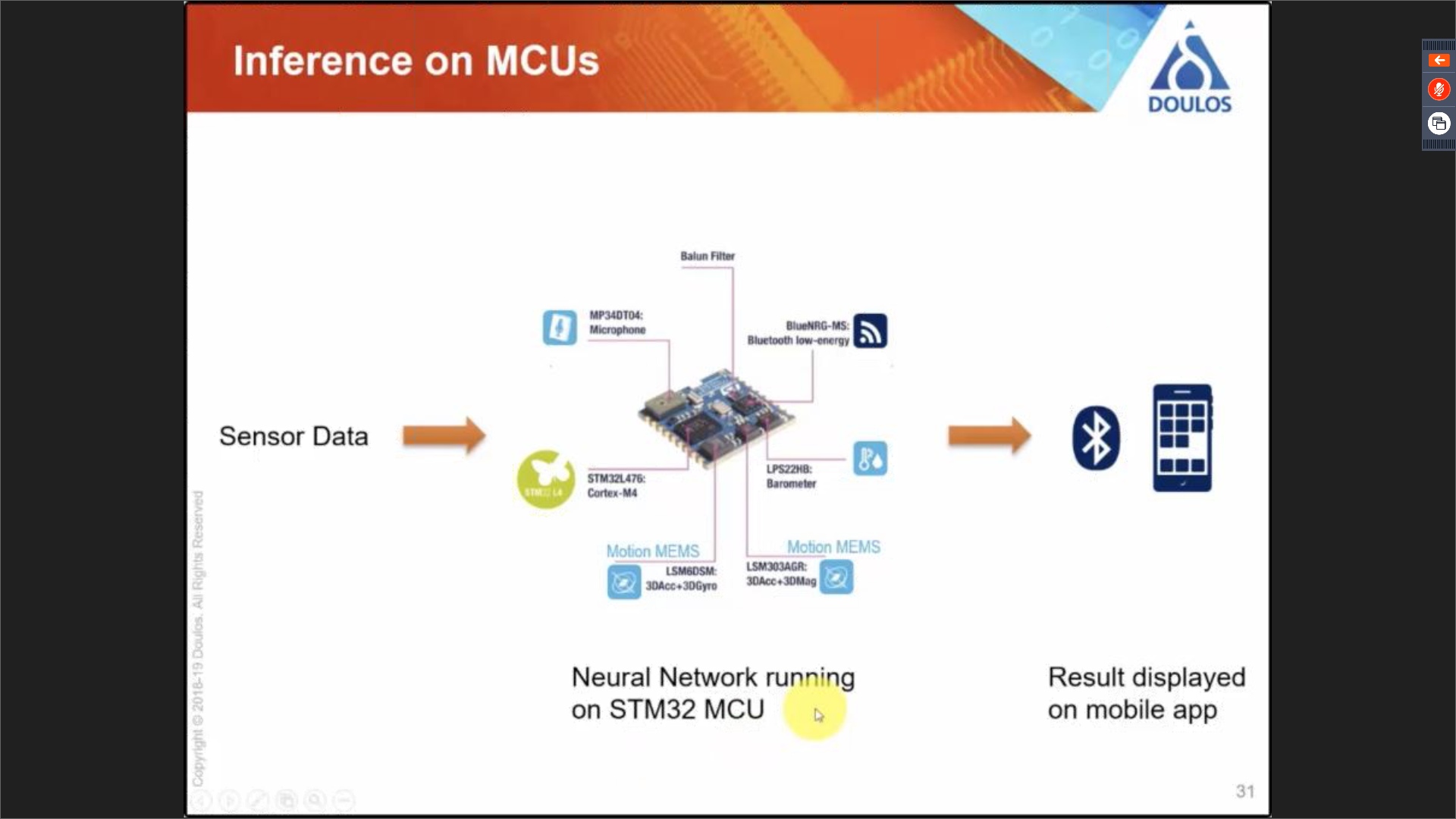 Block diagram of an application using an embedded neural network
Block diagram of an application using an embedded neural network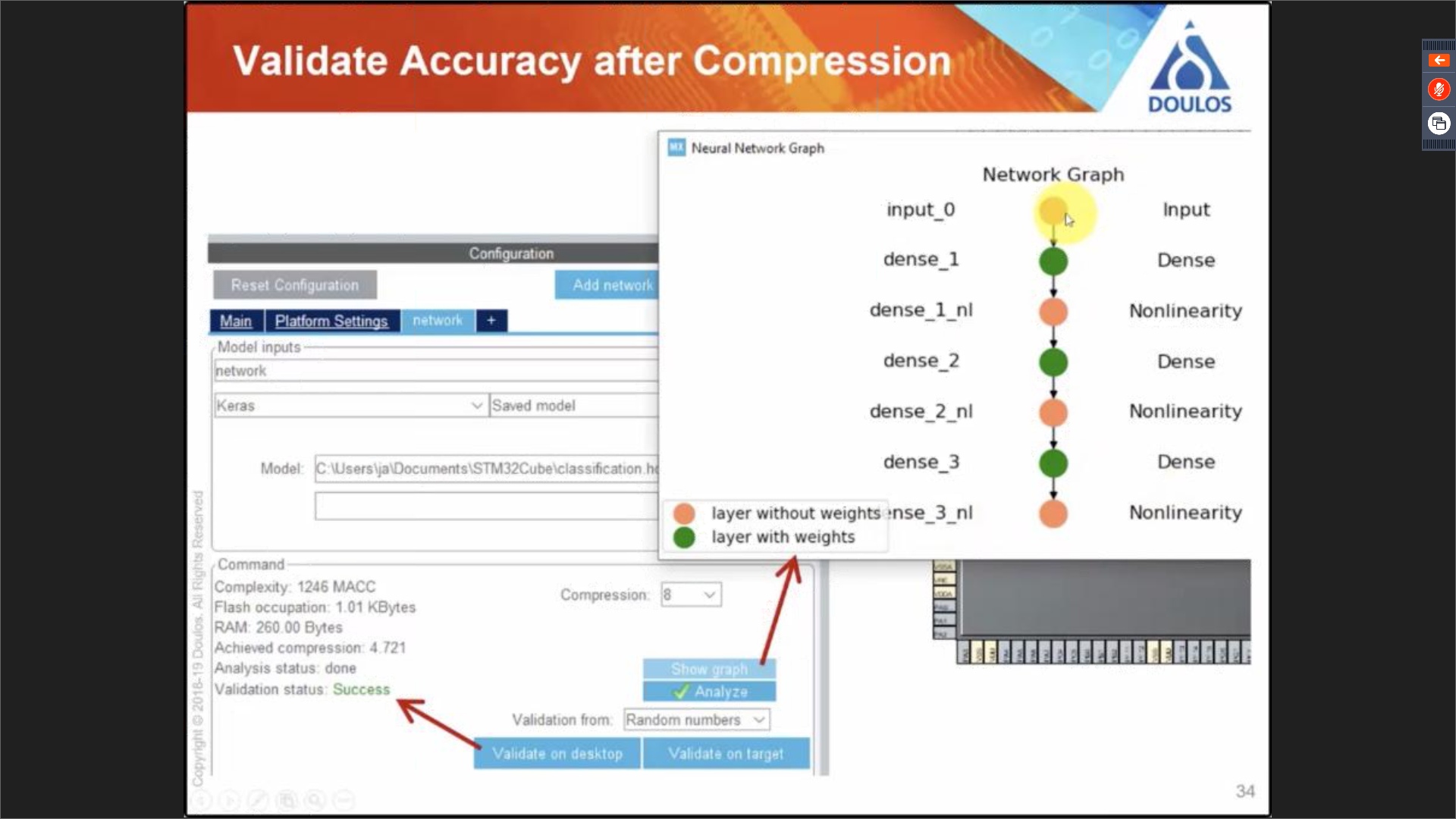 Code generation for MK STM32 from a neural network model obtained using Keras
Code generation for MK STM32 from a neural network model obtained using KerasWell, the weekend has come and you can safely go to the first conference for hardware developers for
Yandex.Zhelezo . The main topics covered at this event were: the introduction of Alice into her smart home, algorithms and hardware filling of an unmanned car, and, of course, lunch. Yandex is actively promoting its voice assistant, including in the field of smart home, and is well aware that it is impossible to support absolutely all devices, from household appliances to custom devices of cat feeders and the like. Therefore, now they offer Alice as an interface, the API of which home appliance manufacturers could implement and support in their devices. In addition, they announced, in my opinion, an extremely successful solution, both for large manufacturers of equipment and for DIY-developers -
Aliceduino . Unfortunately, I could not make a photo of the board itself, but I can share the functional diagrams of the modules and a brief description.
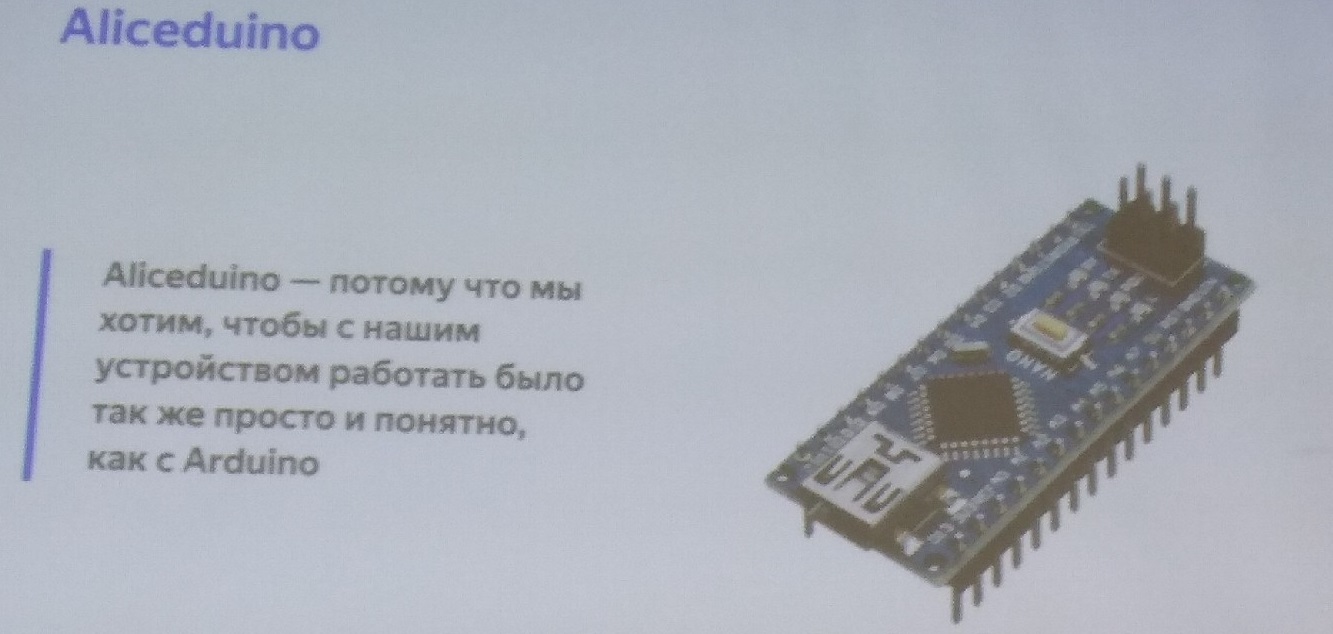 Announcement of Aliceduino - expansion boards with support for Alice (The picture of the board is not true)
Announcement of Aliceduino - expansion boards with support for Alice (The picture of the board is not true)This is a module that has WiFi, a microphone input and an output in the form of a regular 5V UART, which allows you to process voice commands in real time. At the time of the announcement, there were two operating modes:
1. Speech recognition (in UART, words in the form of strings recognized after the word "Alice" get into)
2. Recognition of meaning (not words come to UART, but commands *)
* Need to interact with Yandex tools
The microphone board is available in several configurations, depending on the application and application.
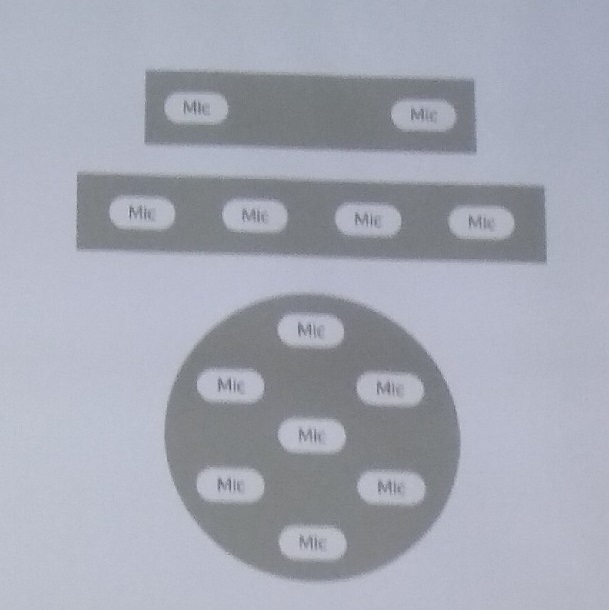 Microphone Board Options for Aliceduino. 2, 4, 7 - microphone performance
Microphone Board Options for Aliceduino. 2, 4, 7 - microphone performanceThe module itself is a System on module (SOM) + expansion board with an audio subsystem (audio codec and amplifier for outputting sound to an external speaker)
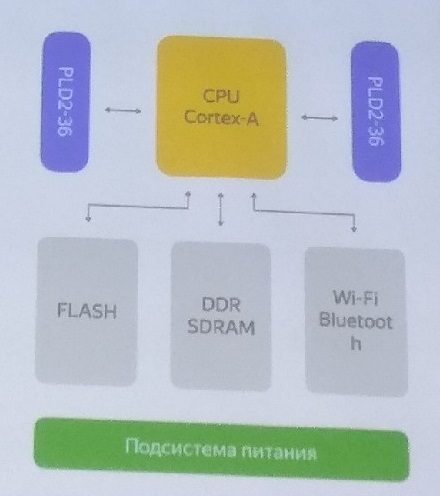 SOM Functional Diagram - Alice's Brain
SOM Functional Diagram - Alice's Brain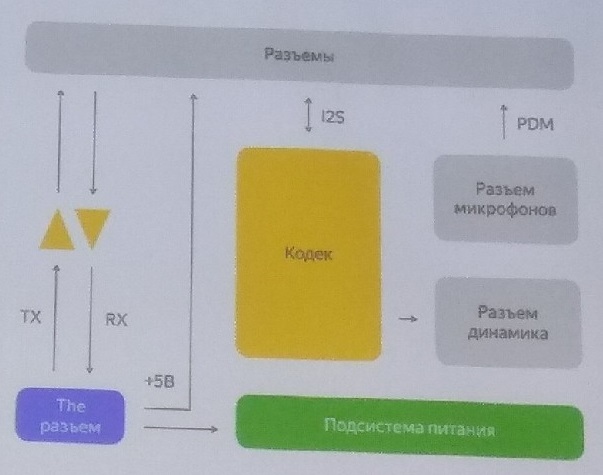 Functional diagram expansion board with audio and UART pins
Functional diagram expansion board with audio and UART pinsAs a result, we get Alice’s integration into our applications using 4 wires:
RX, TX, + 5V, GND. They could not voice the approximate cost, because circulation has not yet been released. Release on sale, as mentioned, is planned for the New Year.
The reports were extremely rich and interesting. Honestly, I did not expect that I would leave the event in such enthusiasm. Again, I want to express my deep gratitude to the organizers.
A few photos of an unmanned car

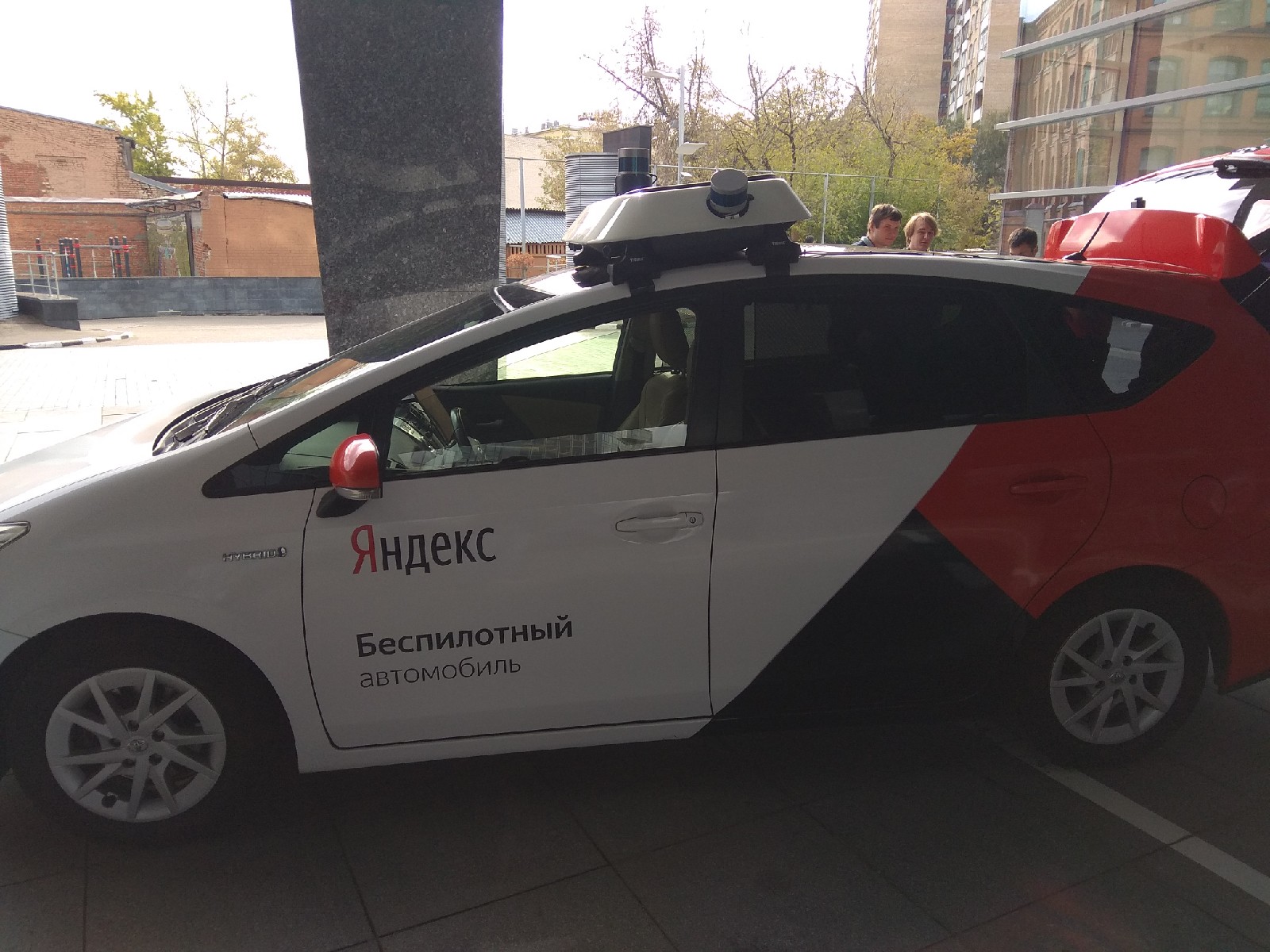
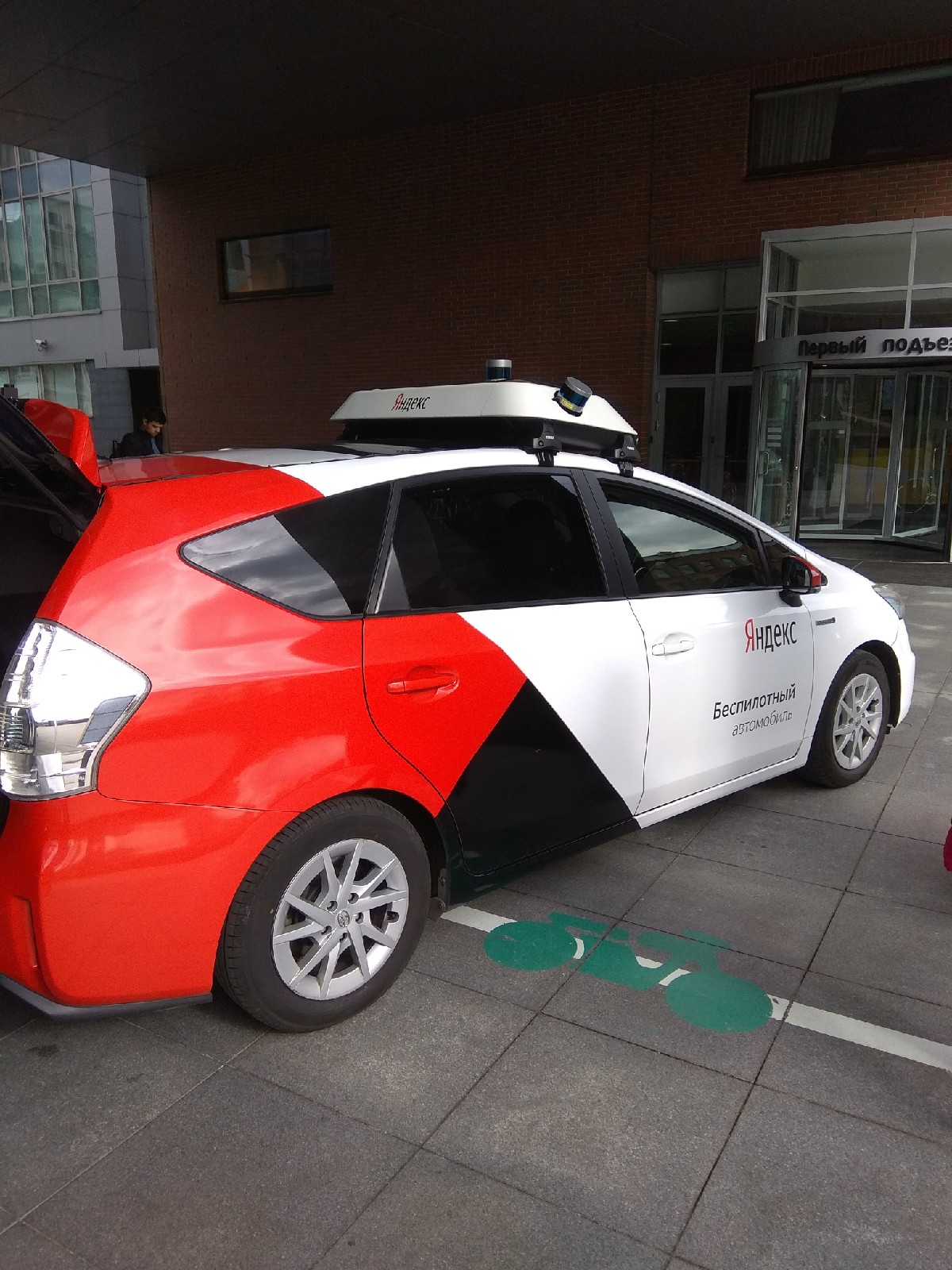
 Indications from lidars of the car
Indications from lidars of the car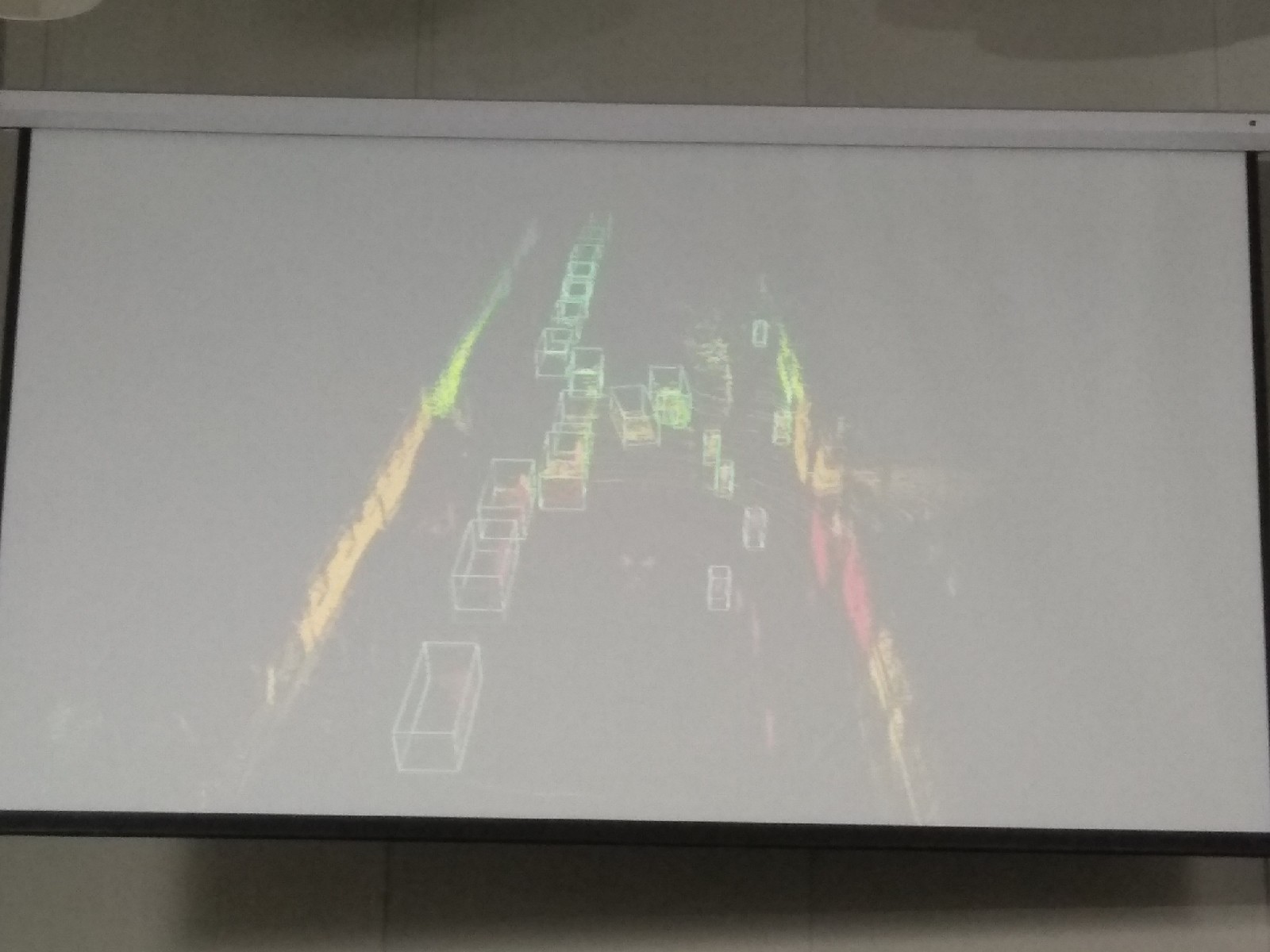 How a car navigates in space along lidars
How a car navigates in space along lidars Summing up, I want to note how diverse and fascinating the conferences became on the glands. If earlier, apart from advertising electronic components and small stands with boards, I could not see anything, then this time, such an interactive and lively approach to the demonstration of products made me very pleased. I want to participate in this and promote in every possible way. Thank.
PS I apologize for the quality of the photo. Links to the mentioned technologies can be found below.
1.somlabs.com/news-room/visionsom-6ull-new-som-imx6-ull2.
www.tensorflow.org/guide/keras?hl=en3.
www.st.com/content/st_com/en/stm32-ann.html